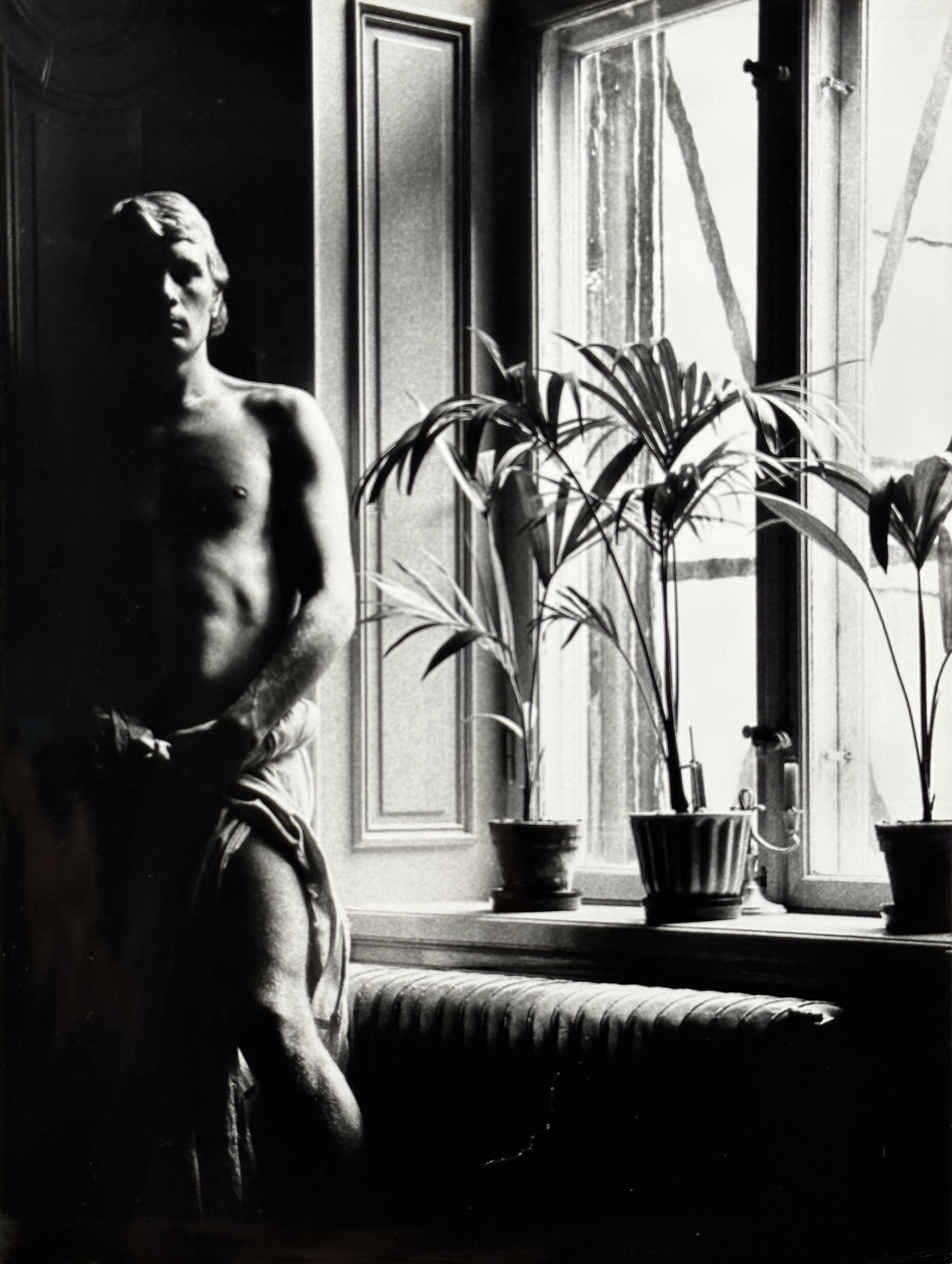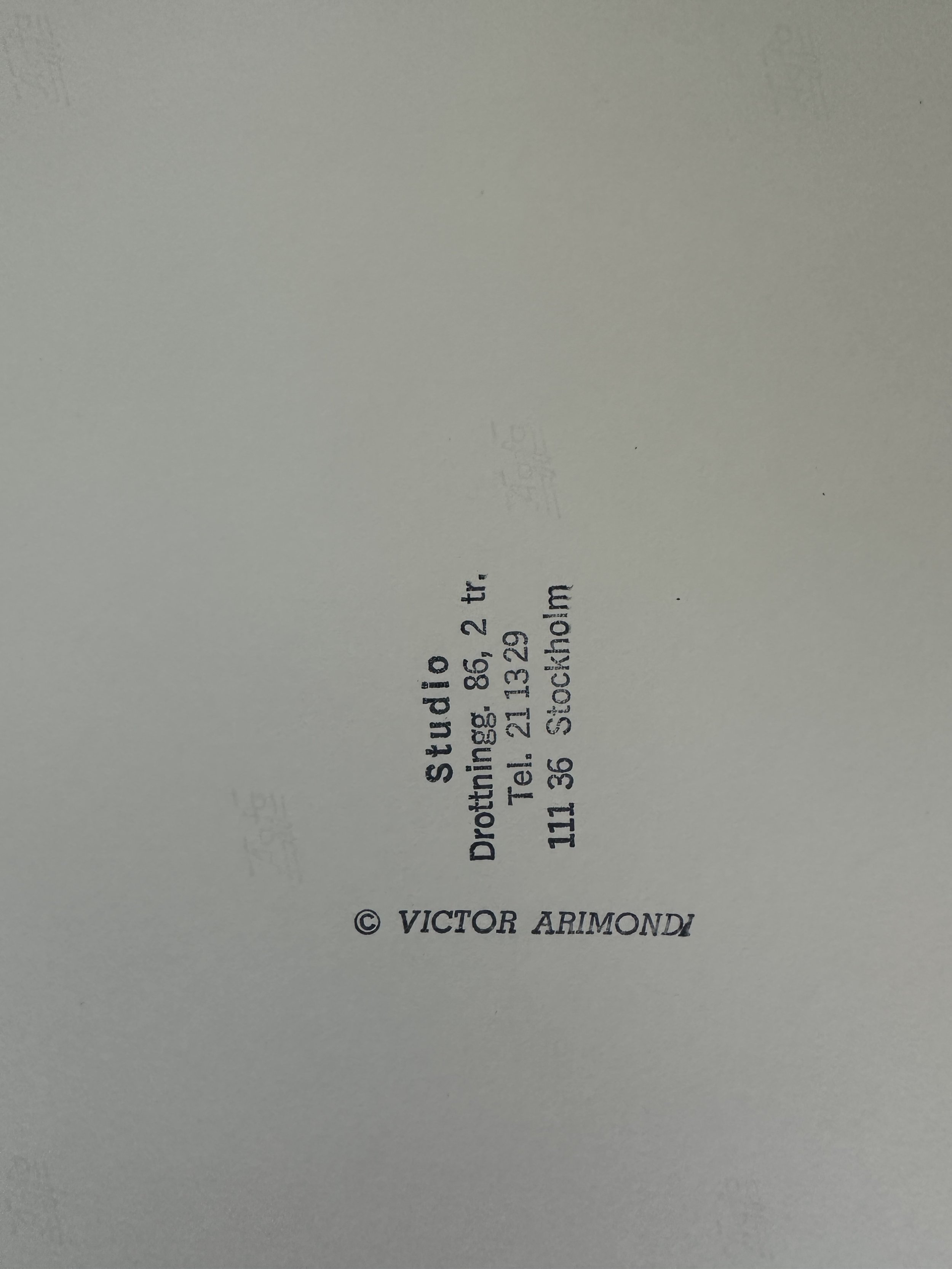Born in 1942 out of wedlock in the midst of war-torn Italy, Victor Arimondi survived the hardships of his early childhood to devote his life to the only things he believed in: love and beauty.
After the war, Arimondi’s young mother left him for a year-and-a-half at her sister’s orphanage so she could take a much-needed job in Sweden. She soon married and returned to Italy to retrieve her only child, who had just turned seven. While growing up in Sweden, Arimondi thrived under the country’s egalitarian values and began to express his creativity at school. At the age of 14, he and his family returned to Italy, to Naples in the south of the country, forcing him to adapt to a diametrically opposed culture. This traumatic change, and his emerging homosexuality and sexual energy, resonated in Arimondi’s work throughout his career. Immediately after graduating from high school, he left his family and moved back to Sweden to attend the state art school in Stockholm, studying art at night and working as a mailman during the day. It was also during this period, the summer of 1963, that Arimondi met and fell in love with a prominent physician, whose care and devotion helped stabilize his often tumultuous temperament. When 1965 arrived, Arimondi decided to put his Italian good looks to use and began to work as a model. His subsequent success as a fashion model exposed him to the movers and shakers of the European fashion industry and art world.
In the early 1970s, Arimondi bought his first professional camera and was accepted at a well-know photography school. His first fashion-oriented photographs done for school assignments were soon supplemented by portraits and fantasy shots of his friends and muses. “Photography was becoming an expression that would totally absorb me,” he wrote of that time in his unpublished autobiography in 1984. Arimondi worked as assistant to a popular fashion photographer in Copenhagen and later met and photographed a young Grace Jones in Paris. Back in Stockholm, he opened his first photography studio. Through his door passed Sweden’s celebrities of the stage, screen and high society. He had his first show, which exhibited those aristocratic portraits alongside his beautifully androgynous images of semi-nude men. By the mid 1970s, Arimondi’s work was discovered by Bill Como, editor-in-chief of trendy After Dark, a New York gay entertainment magazine. Como noted that Arimondi was “especially adept at conveying a casual grace heightened by an enigmatic sensuality.” Encouraged by Como and tired of the serious political atmosphere of Sweden, Arimondi once again uprooted himself and moved to New York in 1979.
While living in New York, Arimondi’s career took flight. He photographed fashion ads that ran in Town & Country, Women’s Wear Daily, Vogue, Harper’s Bazaar, Architectural Digest and Interview magazine. Arimondi also photographed several covers for gay publications including The Advocate and Mandate, despite the professional controversy that ensued. He strongly believed that these photographic images had as much integrity and artistic merit as his other photographs, although this made it harder for him to get other commercial work. “For him the male figure was the epitome of formal beauty, naturally replete with meaning and association—the commonest human denominator,” wrote art journalist, Lauren Richard Janku, in a exhibition catalog for one of Arimondi’s later shows.
What she called his “intuitive vision” attracted Color Library International in 1979, which commissioned Arimondi to photograph for their upcoming book, “The Look of Men”. He spent time in San Francisco shooting for the book and fell in love with the city. His work also appeared in the landmark book, “The Male Nude”, published by Taschen and still in print.
In 1981, Arimondi moved to San Francisco and opened his 551 Gallery in the Haight-Fillmore district of the city. Soon after, he met his second great love, also a physician, who created a safe and stable environment for him to create art and photography through the end of his life. By 1985, AIDS had begun to overtake the city along with many of Arimondi’s muses. Since his photographs were a reflection of his own sensitive emotional state, he began interpreting the epidemic through his camera lens. He created a series of photography collages, “55 x 1”, which was acquired by the GLBT Historical Society in San Francisco. This series was also a part of a larger collection of portraits called “Thinking Faces”, which included self-portraits, the homeless, prostitutes, construction workers, transsexuals, celebrities and socialites spanning more than 30 years of his intercontinental life. In the summer of 2001 Arimondi himself succumbed to H.I.V. disease. Over his lifetime, he had success and near ruin, both as a European fashion model and then as an artist and photographer. Despite his untimely death at the age of 58, Arimondi lived long enough to see his photography exhibited and appreciated around the world.


